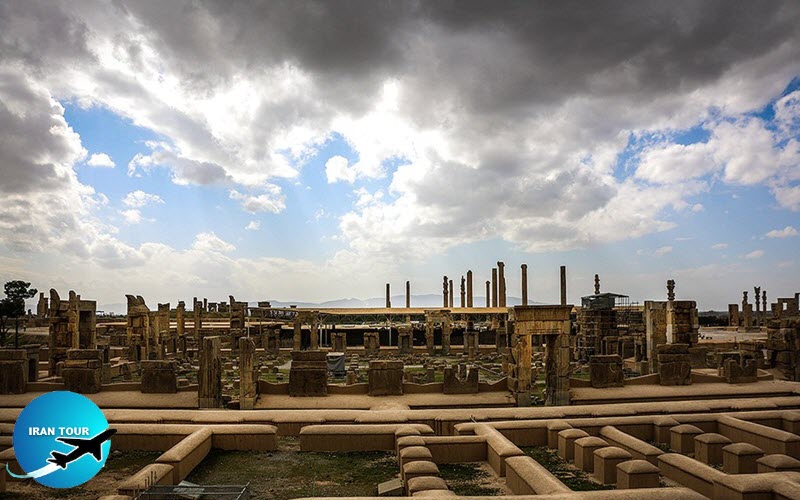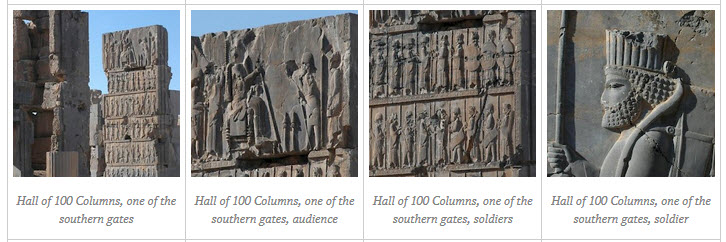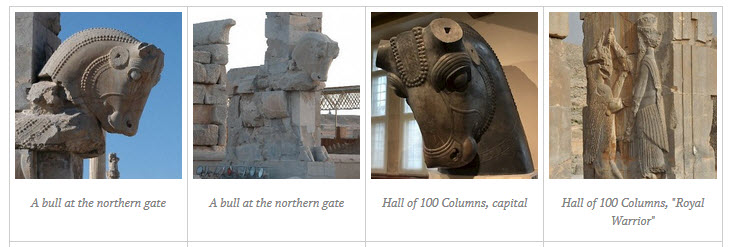Copyright 2020 - 2021 irantour.tours all right reserved
Designed by Behsazanhost
Persepolis Hall of a Hundred Columns
Hall of a Hundred Columns
The main part of the building - the second largest after the Apadana was occupied by a square central hall with each side measuring 68.5 m. This hall was supported by one hundred columns about 14 m high-hence the appellation of the palace. The columns consisted of a | bell-shaped base; a discoid torus; a fluted, cylindrical shaft; and a double-bull capital of the capitals, two have survived; these were removed and taken to Chicago. Eight monumental doorways, two on each wall, linked the hall to the side structures, but only the north doors were used as ceremonial portals. A sixteen-columned portico and a large forecourt fronted the main entrance to the palace. The columns of the portico were identical to the columns of the main hall but had capitals shaped like human-headed bulls. The piers flanking the portico were also adorned with figures of colossal bulls, one of which has been restored.
 |
On the east, the central hall was bordered by a guardroom and storage chamber, while on the west and south, it was lined by a long, narrow vestibule. Each of the three walls of the building (east, west, and south) had two windows and nine regularly spaced niches, while the north wall had five windows and two niches. All the doorjambs were carved with magnificent bas-reliefs. The smaller doorways on the west and east show representations of a royal hero engaged in victorious combat against wild creatures - the subjects already observed on the sculptured doorways of the Tachara and the Harem. Even more striking bas-reliefs cover the north and south portals. The south doorways portray the king (perhaps Artaxerxes I) being borne on his throne into the hall. Behind the throne stands a eunuch with a neatly folded towel in one hand and a fly whisk in the other. Above the king hovers a winged figure symbolizing his royal fortune.
 |
Below the palanquin which carries the throne, representatives of twenty-eight subject nations are depicted in three registers, fourteen representatives on every jamb. This is a departure from the earlier convention of symmetry, according to which the mirror image of a scene was portrayed on the opposite side. Another new feature is the exaggerated size of the king in relation to the other figures, which deprives the scene of its credibility The north doorways, the highest, also show Artaxerxes I enthroned beneath a canopy. The relief repeats the essential features of the audience scene found in the Treasury, but here the crown prince is missing. In this case, the raised platform of Artaxerxes's throne is supported by royal guards, arranged in five registers. In real life, they might have stood in lines of five in front of the royal throne. The doorways present images of one hundred officers, perhaps the unit leaders of the Immortal regiment.
 |
The uppermost row shows only Persian officers, while the four lower registers show alternatively the Persians and the Medes. The scene conveys an important message: the king depends upon the power of the army, which protects him and his country from enemies and guarantees peace. The doorways of the porch portray the royal guards equipped with tall lances. Although the exact function of the Hall of a Hundred Columns is not known, it is assumed that it was used by the king for the reception of his military personnel and commanding officers.
 |
- Details
- Category: Museums of Shiraz









